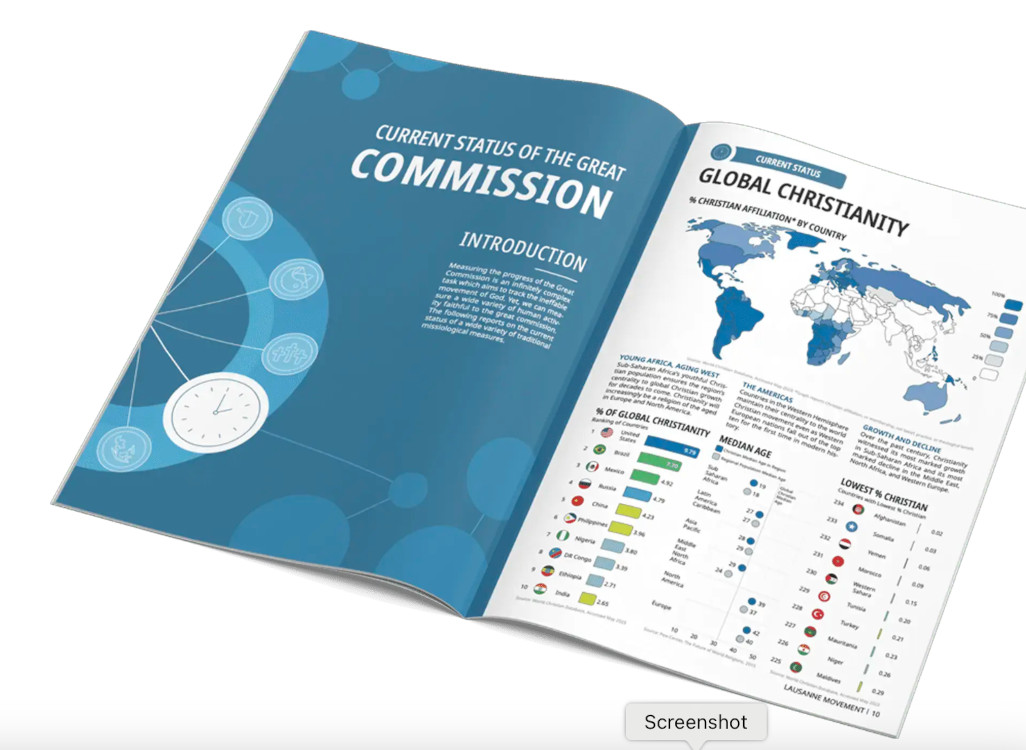Radical shifts in the sending and receiving of Christian missionaries across the world are detailed in The Lausanne Movement’s State of the Great Commission report. The Lausanne Conference is gathering evangelicals across the world this week in Seoul, South Korea.
Here a graph summarises how the pattern missionaries from across the world from 1970 to today.

Source: World Christian Database, Accessed March 2023; *Estimated numbers of missionaries
“With the exception of Europe, every region in the world both sends and receives more missionaries than fifty years ago,” ” State of the Great Commission reports. Latin America has increased as a sending region while still remaining a net receiving region.
“Mission is increasingly decoupled from its Western colonial legacy, with more missionaries coming from countries that lack Christian majorities.”
A stand-out region that has seen change is Asia, which now sends many more missionaries than it receives. Missionary sending from North America has increased while Europe has declined.

Source: World Christian Database, Accessed March 2023
This is a slightly confusing graph—the left-hand graph and nation are about receiving, while the right-hand nation and graph represent sending. It reveals the emergence of Brazil and South Korea as major sending nations.
A revealing interview about missionaries from Brazil is on a recent ABC Religion and Ethics report episode Risking their lives to evangelise: Inside the world of secret Christian missionaries. “In the middle of a war zone, in another nation, imagine stumbling across a fellow countryman who says he’s just there to run a pizza shop. That’s what happened to Brazilian journalist Adriana Carranca. In 2008, she arrived in Afghanistan to cover the US-led occupation. There, she met a man named Luis, who led her to an underground religious network.”
Describing the change as a “polycentric Global mission”, the Lausanne report provides three examples.
South Korea and Singapore are nations with rapid rises in wealth and, consequently, better-resourced churches and missionary activity. “Three Asian countries are especially noteworthy for sending many missionaries. First, the Korean church had sent 1,645 missionaries to 87 nations by 1989; by 2021, however, the numbers spiked to 22,210 missionaries in 170 countries. The total estimated number of Korean missionaries, including those excluded from official statistics, is over 30,000.
“The house church leaders in China conducted three Mission China 2030 Consultations in Hong Kong (2015); Jeju Island, Korea (2016); and Chiangmai, Thailand (2017); planning to send 20,000 Chinese missionaries by 2030. Chinese Christians wanted to emulate the 20,000 Western missionaries in China. There are now only 1,000 missionaries sent from mainland China.”8“
“Operation World (2001) reported 44,000 Indian missionaries from 440 mission agencies, 60% working cross-culturally. The majority of Indian missionaries were commissioned from South India to the vast majority of the Hindu and Muslim population of North India, who had different languages and cultures. Over 440 Indian missionaries ministered in foreign countries.”
A second example is Latin America: the Lausanne report has detailed stats. “Today [the Latin mission congress COMIBAM Internacional] registers more than 30,000 missionaries sent by churches to more than 200 countries, with an estimated monthly financial investment of USD 15,000,000. Of the total number of missionaries sent, approximately 17,000 missionaries come from Brazil and 1,200 from Argentina, which indicates that the remaining 11,800 missionaries come from the other 23 member countries of COMIBAM.”
As a third example, the Lausanne report cites Yaw Perbi, past president of International Student Ministries Canada’s assertions that “Africa’s 500,000 international students (10 per cent of the global population) are the African diaspora’s ‘best-kept secret.’ Even if 50% of them are Christians, that’s a 250,000-strong army for the Great Commission!”

